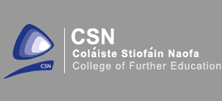Course Summary
Course Category: PLC (Further Education - FET) - Apply directly to College
This diverse and fast-paced course provides professional training in motion graphics, animation, video compositing, 3D graphics, and visual effects (VFX). Students learn how to research and generate ideas and gain the design skills needed to produce high-end, mouth-watering graphics.
Year one covers a broad range of skills in computer graphics, motion graphics, VFX (visual effects), video compositing, animation and 3D modelling.
Year 2 develops and refine these skills, focusing on advanced motion graphics and editing, 3D character animation, 3D cinematography. Students learn to produce professional quality motion graphics, rig and animate 3D models and light, render and composite their work.
These skills equip students for careers in motion design, visual effects, 3D graphics for games, film and television.
Course Details
This course prepares you for working in the following Career Sectors:
What will you study?
-
YEAR 1
Video post-production & animation in Adobe After Effects
Project development
Image creation and editing in Adobe Photoshop & Illustrator
Visual effects & motion graphics cultures
Motion graphics practices
3D Modelling
Typography
Professional practice
YEAR 2
Advanced motion graphics & animation
3D computer modelling & animation
3D lighting & rendering
Sound design & editing
Personal professional development
Visual effects & video compositing
Collaborative project
Important
- Colleges may add/remove modules to keep the course updated and to meet demands.
- Almost all PLC courses have a Work Experience module, which requires students to find their own placement in an area directly related to their course.
Progression to CAO Courses
The Student - Career Interests
This course is typically suited for people with the following Career Interests:
Creative
Creative people are drawn to careers and activities that enable them to take responsibility for the design, layout or sensory impact of something (visual, auditory etc). They may be atrracted to the traditional artistic pursuits such as painting, sculpture, singing, or music. Or they may show more interest in design activities, such as architecture, animation, or craft areas, such as pottery and ceramics.
Creative people use their personal understanding of people and the world they live in to guide their work. Creative people like to work in unstructured workplaces, enjoy taking risks and prefer a minimum of routine.
Further Research
Career Progression
Graduates have an excellent and adaptable skills set. Recent graduates are employed in e-learning, 3D animation, web design, architectural visualisation, motion graphics, film post-production and video-game graphics.

